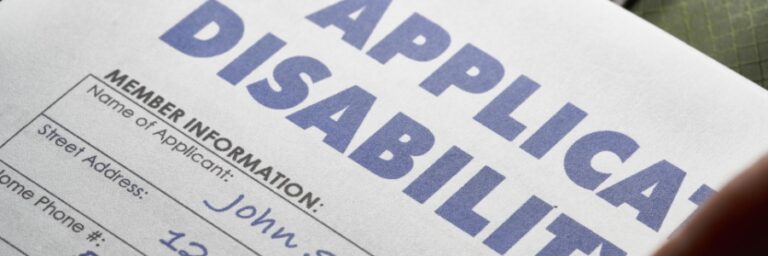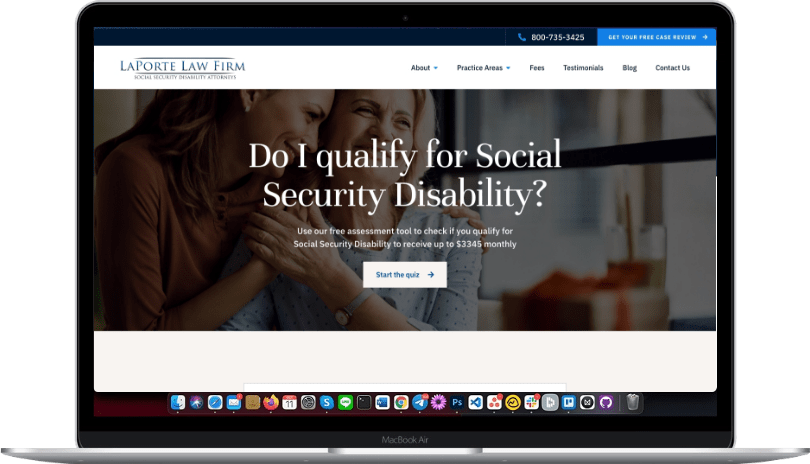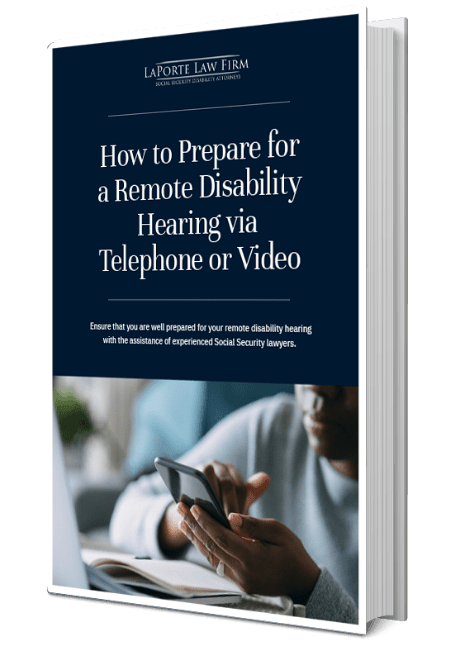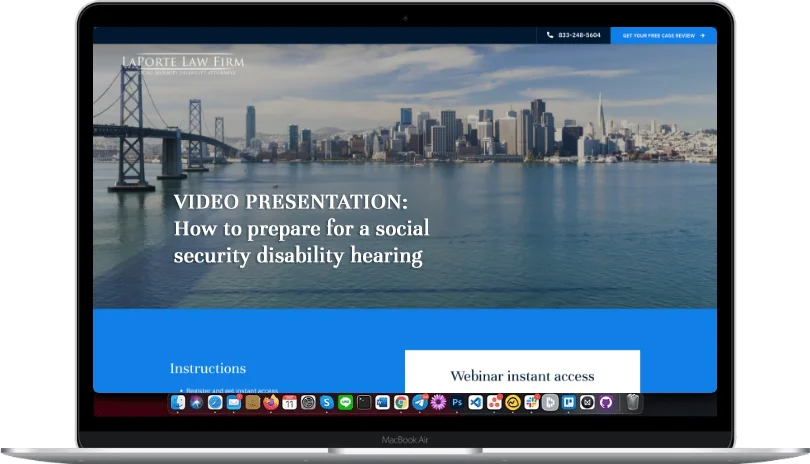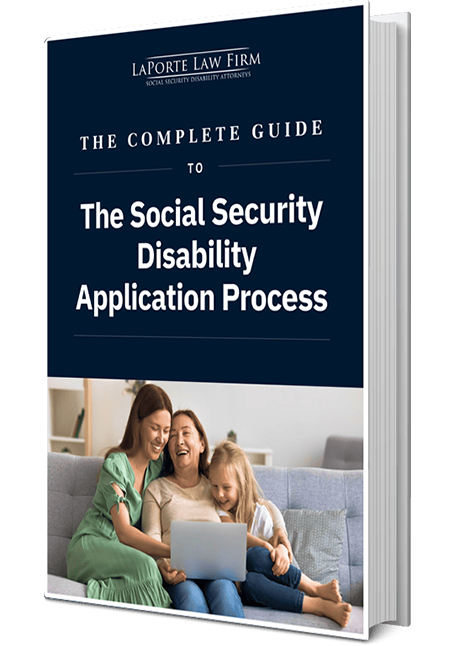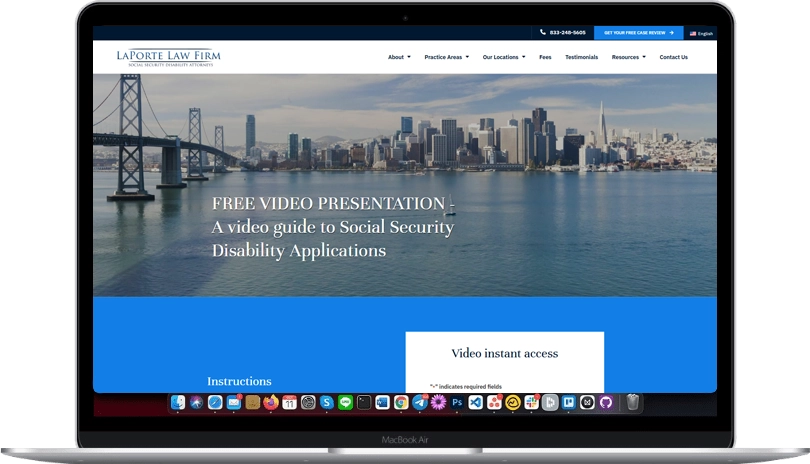
Many Americans who have experienced a disability find themselves in a catch-22 between their last paycheck and the uncertain arrival of benefits, often leaving them in precarious financial circumstances. During this transition period, acquiring a loan may seem like the lifeline needed to maintain stability and cover essential expenses.
Securing a loan while waiting for Social Security disability benefits is not only possible, but it can also be a crucial step in alleviating short-term financial stress. Understanding the options available can empower you to make informed decisions during this challenging time. In this article, we will explore what options Social Security offers and how loans affect your eligibility for benefits.
Introduction to Social Security Disability
Administered by the Social Security Administration (SSA), Social Security disability provides financial aid to people who can’t work because of a serious medical condition. To qualify, your condition must be expected to last at least a year or result in death, and it must keep you from doing any kind of substantial work. You must demonstrate an inability to perform your past work or other full-time work in the national economy.
Overview of SSDI and SSI
The SSA offers two types of disability benefits: SSDI (Social Security Disability Insurance) and SSI (Supplemental Security Income). Both programs help people with disabilities, but they have different nonmedical requirements.
SSDI is for people who have worked and paid Social Security taxes long enough to be “insured’ for the benefit. To qualify, you must have worked long enough and recently enough in jobs where you paid Social Security taxes. This is measured using something called work credits. You earn up to four work credits per year. Most people need 40 credits, with 20 of those earned in the last 10 years before becoming disabled. Younger workers may qualify for SSDI with fewer credits.
SSI, on the other hand, is for people with very limited income and resources, whether or not they’ve worked. It’s based on financial need, so the SSA checks your income, bank account, and other assets to decide if you qualify. The SSA sets resource limits for SSI eligibility. To qualify for SSI benefits, an individual can’t have more than $2,000 in countable resources, and a married couple can’t have more than $3,000. Countable resources include things such as cash, bank accounts, and property other than your home.
Earned income and unearned income
The receipt of income may affect your eligibility for Social Security disability benefits. You cannot earn significant income from employment and still qualify for disability because both SSDI and SSI are intended for individuals who are unable to work due to a medical condition. Earning income suggests you may be capable of performing substantial work, which could disqualify you from receiving benefits under these programs.
However, the type of income you receive matters. The SSA will review your claim to determine if you receive any earned or unearned income. Earned income is money you get from working, such as wages, salary, tips, or self-employment earnings. Unearned income is money you receive without working, such as disability benefits, unemployment, pensions, or interest from savings.
- Earned income
Earned income from work activity will affect your eligibility for SSDI and SSI benefits. When you apply for disability benefits, the SSA looks at whether you’re performing substantial gainful activity (SGA), which means that you are working and earning above a certain monthly amount. In 2025, SGA is defined as work activity in which you earn at least $1,620 per month. If you’re earning more than that through earned income, the SSA generally considers you not disabled and not eligible for SSDI or SSI.
- Unearned income
Unearned income does not affect your eligibility for SSDI. That’s because there are no income or asset limits for SSDI. This means you can receive things such as rental income, investment income, interest, or even drawing from a 401(k), and it won’t impact your SSDI benefits, as long as you’re not doing actual work to earn that money. Passive income (such as rental or investment earnings) is not considered work activity, so it’s not counted as SGA.
Unlike SSDI, SSI is not affected by unearned income. Since SSI is a needs-based program, the SSA looks at all sources of income, including unearned income, to decide if you qualify and how much you can receive. Unearned income includes things such as disability benefits, unemployment, pensions, gifts, rental income, and interest from savings. The SSA uses this income to calculate your monthly SSI payment, and in most cases, the more unearned income you have, the lower your SSI benefit will be. If your unearned income is too high, you may not qualify for SSI at all.
Types of Disability Loans
When someone becomes unable to work due to a serious medical condition, the sudden loss of income can quickly lead to financial hardship, especially if they have no savings to fall back on. Everyday expenses such as rent, utilities, food, and medical care continue, even if a person can’t earn a paycheck. Because the process of applying for SSDI or SSI benefits can take many months — or even years — some people may feel forced to look for loans or other forms of credit to get by while their disability claim is being reviewed.
Social Security disability loans
The Social Security Administration does not administer any type of loan. However, in certain limited circumstances, you may be eligible for a one-time emergency payment or a presumptive disability payment.
- Presumptive disability benefit
A presumptive disability benefit is a special type of payment that the SSA may offer to people who are applying for SSI and have a severe disability that seems likely to meet the SSA’s criteria for disability. The key idea behind presumptive disability is that if the SSA determines you have a condition that is very likely to be approved, they may start providing you with temporary benefits right away while they finish processing your application. These payments can last for up to six months.
These presumptive benefits are intended to provide some financial relief during the application process, which can take months. However, these payments are not guaranteed; the SSA will review your case later to confirm whether your condition truly qualifies for SSI.
- Emergency advance payments
A Social Security emergency advance payment is a special, one-time payment that is meant to help individuals cover urgent living expenses, such as rent or medical bills. It is paid to those who are due SSI disability payments or presumptive disability benefits. The emergency payment is not guaranteed and is typically available only in certain situations, such as when a person has an immediate and severe financial need. To request an emergency payment, you would need to show the SSA that you’re facing financial hardship and that you meet their specific criteria for receiving such assistance.
The amount cannot exceed the Federal Benefit Rate ($967 in 2025) plus the federally administered state supplement, if any. In California, for example, the state supplement is $239.94. Therefore, if you qualify for an emergency advance payment in California, you will receive a maximum amount of $1,206.94 ($967 + $239.94).
Related reading: Getting Emergency Disability Payments from Social Security
Personal loans
A personal loan is a loan that you can obtain from a bank, a credit union, or an online lender. It is paid back in fixed monthly installments over a set period of time (usually one to seven years). Most personal loans are unsecured, meaning they don’t require collateral, and approval is based on your creditworthiness. Secured loans, on the other hand, do require collateral, and they may offer lower interest rates or approval for those with poor credit.
Personal loans can be used for many purposes, including debt consolidation, medical expenses, home improvements, vacations, and major purchases.
Private loans
A private loan is a type of loan offered by nongovernment lenders, such as individuals, private companies, or online lending platforms, rather than banks or government institutions. These loans can be used for various purposes and often have more flexible terms. However, they may also come with higher interest rates, fewer consumer protections, and greater risk.
Online lending platforms such as Wealthfront, Klarna, and Upstart offer accessible financial products such as personal loans, “buy now, pay later” services, and automated investment tools. These loans provide temporary financial relief and are not considered earned income or substantial gainful activity for purposes such as Social Security disability eligibility. However, these loans carry significant financial risks, particularly for individuals without stable income, due to potentially high interest rates and strict repayment terms. If an SSDI or SSI application is denied or delayed, repaying these loans may become difficult, leading to debt accumulation, damaged credit, and financial instability.
Home equity line of credit
A home equity line of credit (HELOC) lets you borrow money using your home’s equity as collateral. It works like a credit card: you can borrow, repay, and borrow again up to a set limit during a draw period (usually 10 years). After that, you enter a repayment period (typically 20 years) to pay back what you’ve borrowed. HELOCs often have lower interest rates than credit cards, and in some cases, the interest may be tax-deductible (check with a tax advisor to be sure). HELOC loans do not count as earned income.
Buy now, pay later loans
A buy now, pay later (BNPL) is a type of installment loan that allows consumers to make purchases immediately and repay the balance in a series of smaller payments, typically four biweekly installments. This payment option is commonly offered during online, mobile, and in-store transactions.
While many BNPL plans are interest-free, the first payment may be due at checkout or two weeks later, depending on the provider. Unlike traditional credit cards, each BNPL transaction may involve a credit check to assess the borrower’s ability to repay. Although interest is often not charged, late payments can result in additional fees. It is important for consumers to ensure they can meet the payment schedule before committing to a BNPL agreement.
BNPLs do not count as earned income.
Retirement plan withdrawals and loans
A retirement plan such as a 401(k) can typically only distribute funds when certain events occur, such as retirement, leaving your job, or facing a serious financial hardship. These rules should be clearly explained in the plan’s summary plan description. Some plans may also allow early withdrawals or loans, but not all do. An early withdrawal means taking money out of your 401(k) before you turn 65 (or your plan’s official retirement age), which can result in an extra 10% income tax on the amount withdrawn, unless you qualify for an exception. For IRAs, withdrawals are considered early before age 59½ and may also be subject to the 10% penalty.
A 401(k) loan allows you to borrow money from your retirement account, with the requirement that the loan is paid back into the account over time. As long as the loan follows the plan’s rules and the repayment schedule is met, the money is not taxed. However, not all retirement plans offer loans; only certain plans such as 401(k), 403(b), 457(b), and profit-sharing plans may do so. Plans based on IRAs, such as SEP or SIMPLE IRAs, do not offer loans. To find out if your plan allows loans, you should check with the plan sponsor or review the summary plan description.
A loan or a withdrawal from a 401(k) is not considered earned income. Therefore, it’s not considered substantial gainful activity under the SSA’s rules.
Payday loans
A payday loan is a short-term, high-cost loan, usually for amounts of $500 or less, that is typically due on your next payday. These loans are often used for small, urgent expenses and have very short repayment terms. They usually come with automatic repayment, meaning the lender will directly withdraw the money from your account when the loan is due. Payday loans typically don’t require a credit or financial check, making them accessible to individuals with poor credit. However, they can come with high fees and interest rates.
Payday loans do not count as earned income because they are loans that you must repay, not money you earn through work. However, payday loans are often tied to your employment, as they are typically repaid through deductions from your paycheck. If you are working and receiving regular income, that income would be considered earned income and could impact your eligibility for Social Security disability benefits.
Applying for Loans While Receiving Social Security Disability
If you are receiving Social Security disability payments, you may be able to use your disability payments to borrow money from a lender. Disability payments are accepted as a form of income by many financial institutions. You should know that the Equal Credit Opportunity Act prohibits financial institutions to discriminate against disabled individuals.
When applying for a loan, many lenders require that you provide documentation of your income. If you are receiving disability benefits, you may be able to provide proof of your benefit verification letter that shows you receive benefits. The benefit verification letter can be obtained online on your ssa.gov account. You can also call SSA at +1 800-772-1213 and ask for proof of income.
Impact on Social Security Benefits
Securing a loan can have different impacts depending on whether you are receiving or applying for SSI or SSDI.
How loans affect SSI benefits
If you enter into a valid loan agreement for the loan of funds — meaning there is a clear understanding that the money or item must be repaid — the value of what you receive is not considered income and will not reduce your SSI benefit in the month you receive it.
However, any funds you borrow and do not spend within that month you receive them will count toward your SSI resource limit in the following month (i.e., $2,000 for an individual or $3,000 for a couple).
It’s also important to understand how in-kind support affects your eligibility for SSI benefits. In-kind support and maintenance is food, shelter, or both that somebody else provides for you. The SSA counts in-kind support and maintenance as income when they figure the amount of your SSI. Food and shelter provided to an individual under the terms of a bona fide loan agreement are not counted as in-kind support and maintenance.
To qualify as a bona fide loan of in-kind support and maintenance ISM) for SSI purposes, five specific requirements must be met.
- The loan must be enforceable under state law, either as an oral or written contract.
- The loan agreement must exist at the time the food or shelter is provided — retroactive agreements don’t count.
- Both parties must unconditionally agree that the ISM will be repaid, regardless of whether the borrower receives benefits.
- There must be a clear repayment plan or schedule, including how much will be repaid and when, based on the borrower’s share of household expenses or third-party payments.
- Finally, the repayment plan must be realistically feasible, meaning the borrower must have or expect to have enough income or resources to repay the loan.
If any of these conditions aren’t met, the ISM may be treated as countable income and affect SSI eligibility.
Considerations for SSDI recipients
Loans are generally considered passive or noncountable income. Therefore, they do not affect SSDI eligibility or benefit amounts. Because loans are expected to be repaid and are not earned through work, they are not treated as disqualifying income by the Social Security Administration when determining whether you meet the definition of disability. As long as the funds are genuinely loans, receiving them will not impact SSDI benefits.
Understanding how loans, income, and other factors affect your SSI or SSDI benefits is crucial for a successful claim. LaPorte Law Firm provides clear explanations and strategic advice to protect your eligibility and benefits. Take control of your application — contact us today.
FAQ
The Social Security Administration does not offer disability loans. However, you may be eligible for a presumptive disability benefit payment or a one-time emergency advance payment.
While waiting for approval of your Social Security disability benefits, you may qualify for other public disability benefits, including short-term disability benefits (e.g., California State Disability Insurance) or workers’ compensation benefits. There are other public assistance programs, such as SNAP (food stamps) or general aid. You may also need to explore pension-based income such as early Social Security retirement, 401(k) withdrawals, or other retirement savings. To learn more about your options, see our article “What to Do for Income While Waiting for Disability Benefits”.
For SSDI recipients, loans do not affect benefit eligibility or benefit amount. To be eligible for SSDI benefits, there are no asset or income limits. Therefore, you can take out a loan without affecting your benefits. In addition, you do not need to report a loan to the SSA.
For SSI recipients, loans can affect your benefit eligibility and/or benefit amount. SSI has a strict income and asset limit. To qualify for SSI benefits, your total countable resources must not be worth more than $2,000 as an individual or $3,000 as a couple. If you receive a loan and do not spend it immediately, the loan will be counted as a resource and may put you over the asset limit.




